
Photographica Pages
An online guide to collectable cameras and related stuff
85/2 Zeiss Sonnar for Contax
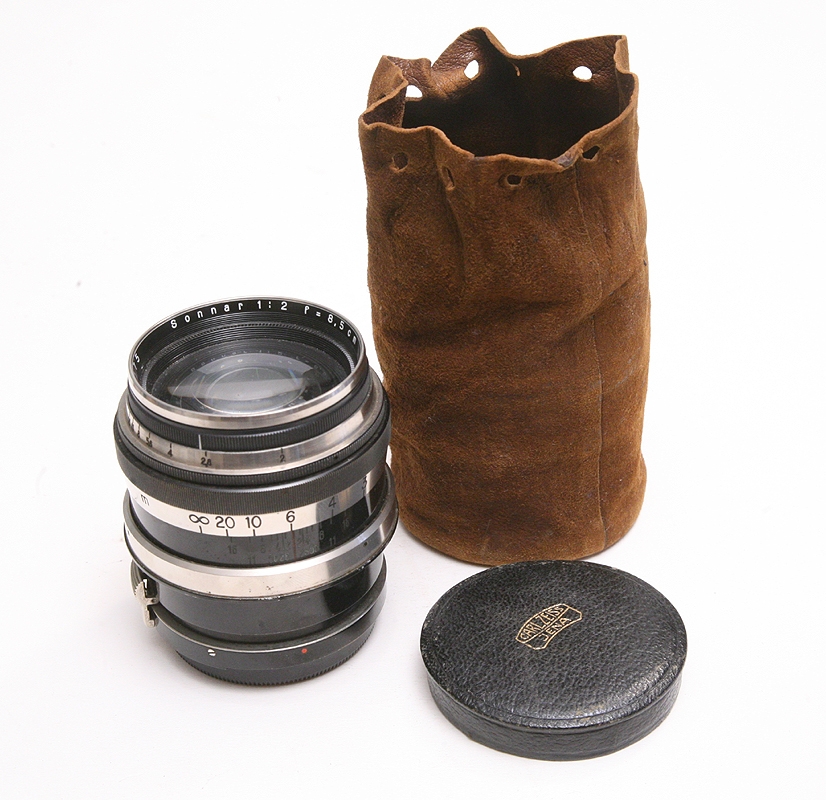
An example of the third version of the 85/2 Zeiss Sonnar, which is black and nickel.
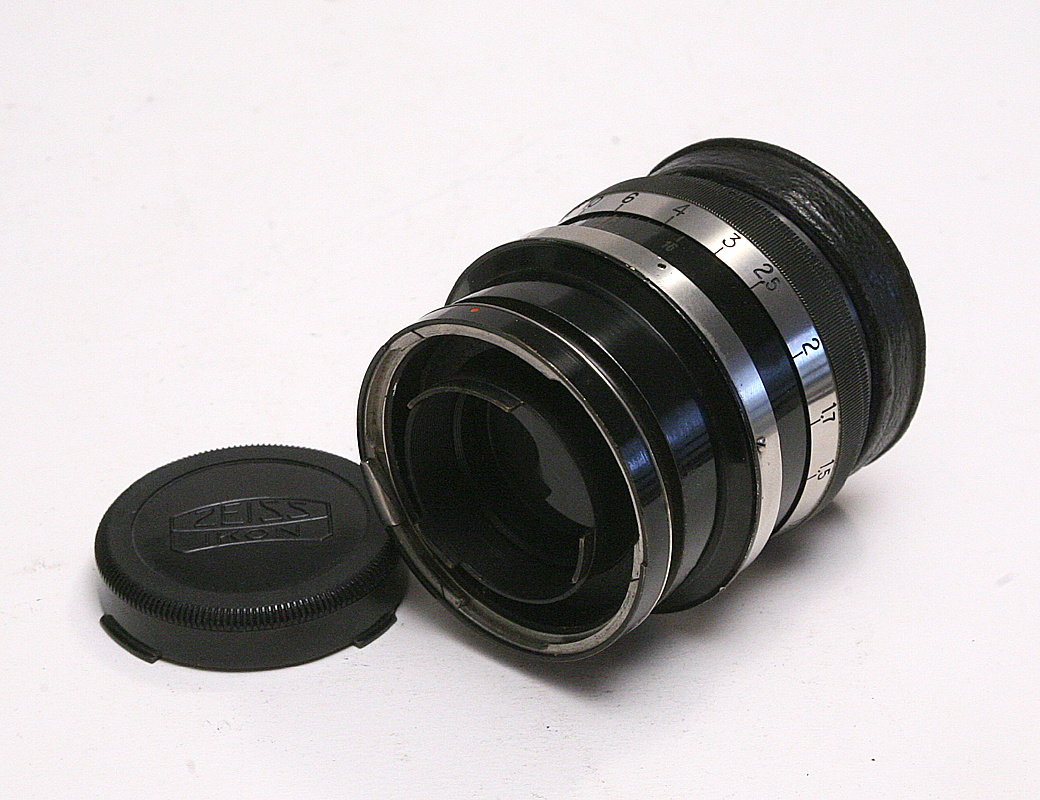
From the beginning, this was one of the crown jewels of the Contax line. It was a bit longer than the
73/1.9 Hektor that Leitz was offering for the Leica, and the performance was much better. For most of
it's life, it was one of the more expensive lenses in the system (and most of the more expensive lenses
were special purpose lenses, most of which involved a reflex housing), and yet it was one of the most
popular. It was a big, impressive looking lens with six elements in three groups (later reformulated to
seven elemments in three groups). When you shot with it, it gave you a feeling of power, to capture
images lessor lenses wouldn't.

An example of the third version of the 85/2 Zeiss Sonnar, which is black and nickel.

Production began in 1933 at serial number 1430301 (although a few lenses were built with earlier numbers, probably for promotional purposes). Finished in black paint and nickel over brass. It lacked front filter threads, the lettering was larger than on later batches, and the front ring was notched for a spanner wrench. The minimum apreture is f/16. This first version may have numbered only 200 units.
The second version had smaller engraving and lacked the spanner notches on the front ring. Production started at 1454101, and still dated to 1933.
In 1934 the knurreled ring above the aperture scale sharnk form 4mm to 3mm. This was somewhere in the 15xxxxx serial numbr range.
With the introduction of the chrome Contax II, the lens was changed to a heavy chrome finish at around 1631401. The lens also recieved a 49mm filter thread on the nose. This dates to 1936.
Later that same year, the minimum aperture was changed to f/22 at about lens 2232500.
The sixth version was introduced in 1938, and lacked the milled ring between the aperture ring nd the nose.
As early as 1937 Zeiss had been experimenting with aluminum barrels on the 85mm Sonnar. This was a heavy lens, and using aluminum in the barrel helped to reduce the weight. And as the war started and progressed brass and chrome became harder to get. Many of the wartime lenses were made in different alloy barrels, including some that were fixed focus for the Luftwaffe, and some with an odd looking barrel to handle better when wearing gloves.
A small batch of lesnes that were exported to Sweden had the 1936 style chrome barrels. The batch may have been serial numbers 2851501 to 2851600.These were likely the last of the chrome over brass 85 Sonnars.
Carl Zeiss Jena resumed production of the Sonnar in 1946. There were cosmetic changes to the barrel, but optically it was the same as the prewar design. It was in an alloy barrel and was T coated. Serial number were 3052801-3053100, 3060901-3061000, 3108201-3108400, 3199301-3200000 and 3207901-3209600, with a total of 3000 produced.
Zeiss Ikon relesed their version with the revised seven element/three groups design in 1950. They were marked Zeiss-Opton, were in an aluminum barrel, were T coated and had a double diaphragm with a total of 24 blades. The barrel was very similat to the design of the 1946 Jena lens, except near the mount, where the Jena lens had a groove between the body of the barrel and the mount. The Opton lens lacked that groove. Serial numbers were 540101-541500, 658101-658600, 839401-840200 and 1128601-1129000 for a total of 2100 lenses.
The final version was marked Carl Zeiss, and the barrel in front of the aperture ring is a single piece instead of two. It is T coated, but lacks the T marking. Only 1500 were produced in batches 1128601- 1128800, 1129301-1130500, and 1475601-1475700.
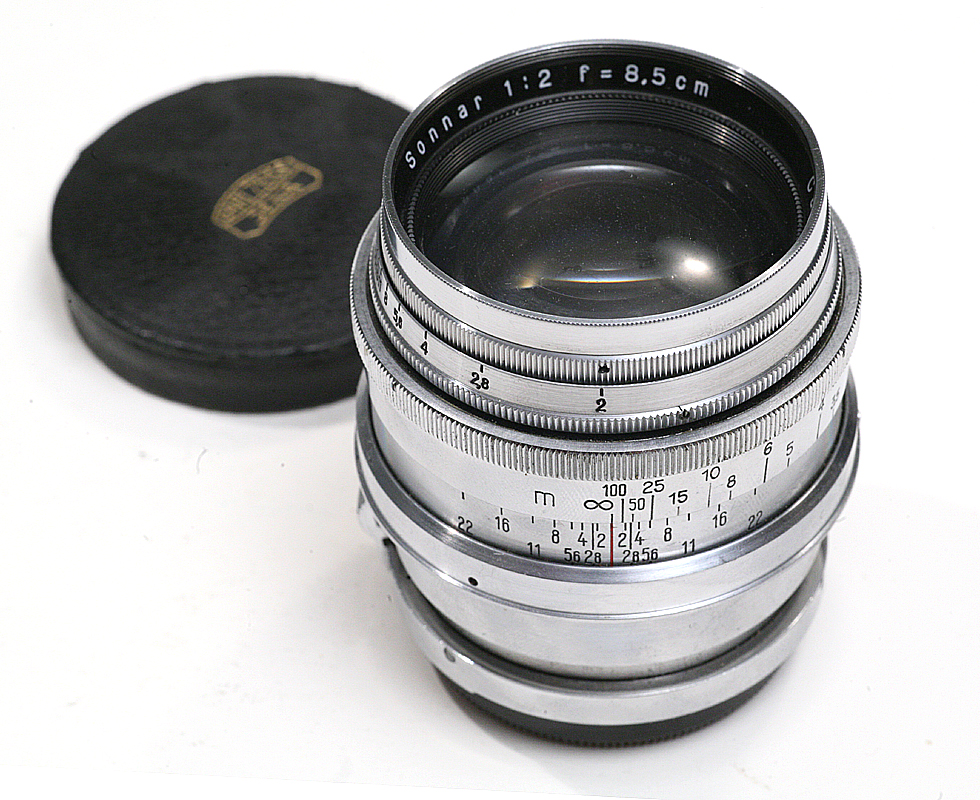
A prewar 85/2 Sonnar in heavychrome over brass. This example was for European markets as the focus scale is marked in meters.
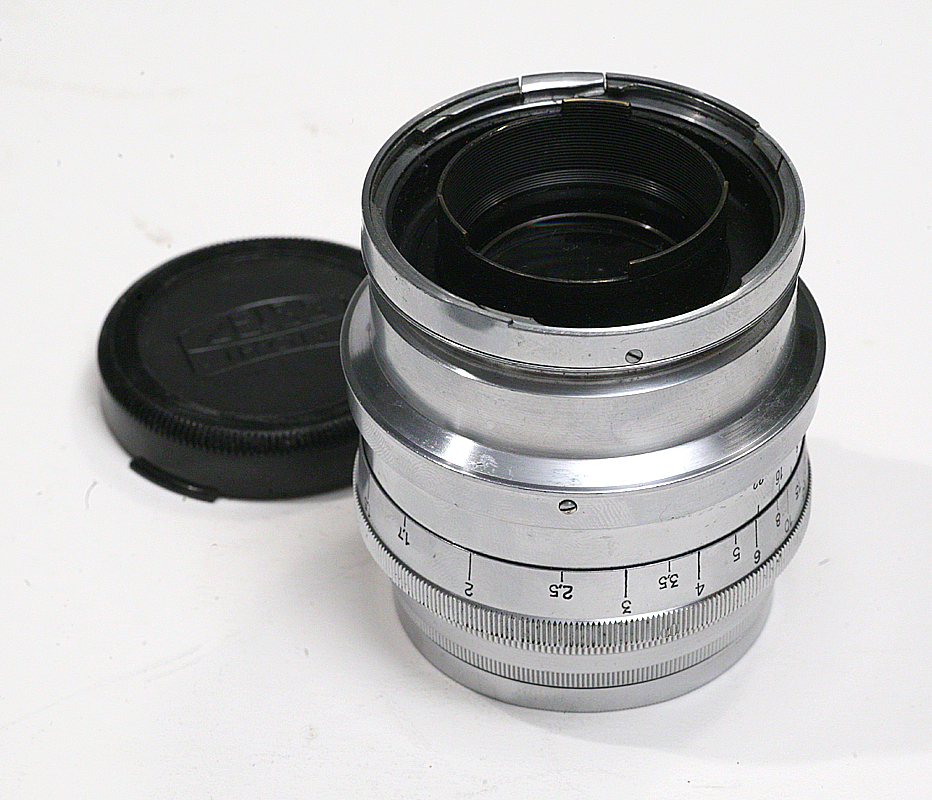
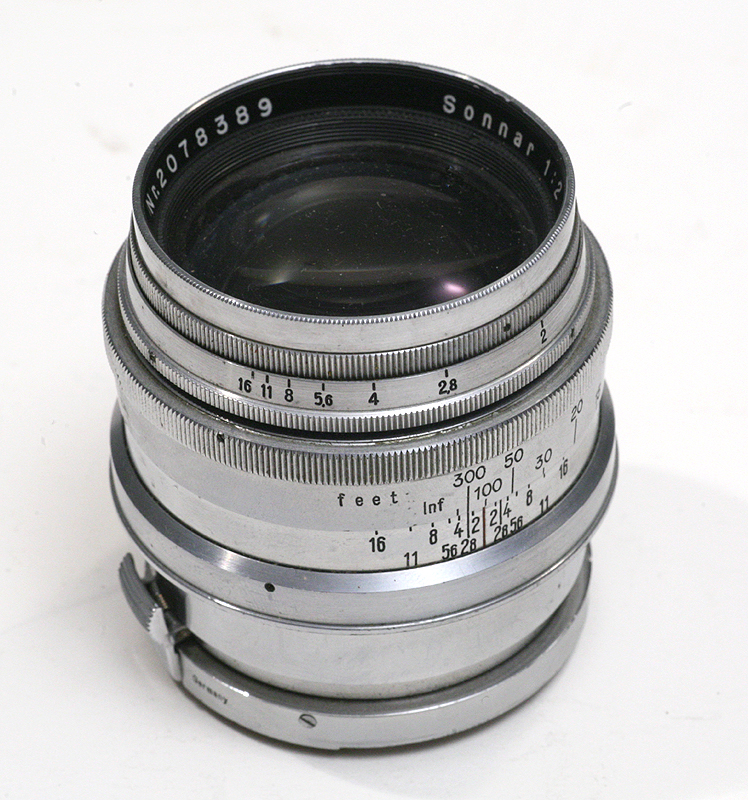
The same lens marked in feet for the US or British markets.
